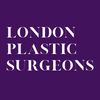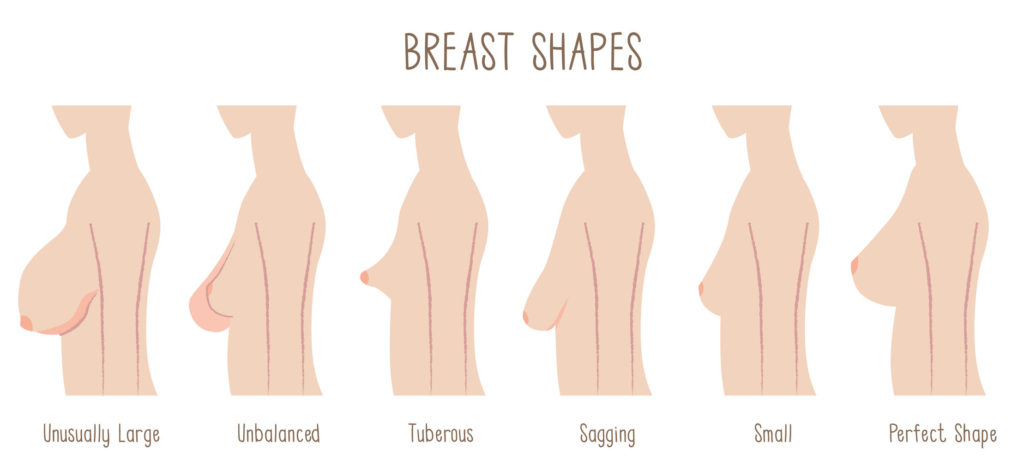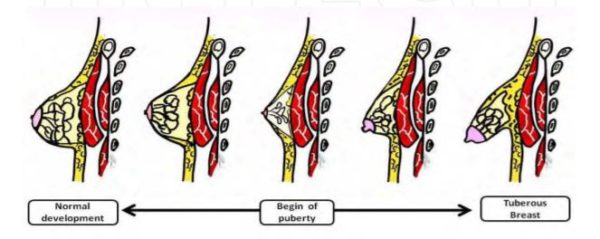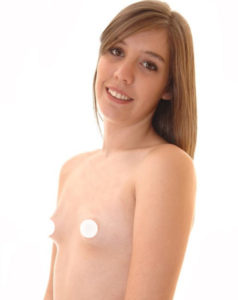Puffy Nipples or Smaller Pointy Breasts? – Maybe you need Tuberous Breast Surgery
It’s true that the natural breast shape varies between one woman and another, however, women who have “tuberous” or “tubular” breasts may show a more extreme difference in one or both breasts. If your breasts are smaller than normal, with pointy or puffy nipples, you may have this condition. Although it’s not a threat to physical health, having tuberous breasts can carry bad consequences on your mental health. Women with misshapen breasts might lose confidence in their body image and beauty causing them embarrassment or distress during intimate situations.
The good news is that tuberous breast correction can be successfully performed by experienced plastic surgeons to achieve a more natural look that appeals to your expectations. If you’re concerned that you might have tuberous breasts, read along to learn more about how doctors diagnose and treat them.
What are tuberous breasts?
Women with tuberous breasts usually have breasts that look smaller-than-normal, or underdeveloped at first glance. This does not mean, however, that every small or sagging breast is a tuberous breast. Tuberous breasts appear narrow, “square” or “shelf-like” and are minimally projecting with a pointy or “snoopy-like” appearance. The nipples often appear pointy, narrow, or puffy and are many times asymmetric or out of balance with the breast mound.
Download Mr Mark Gittos’ Guide to Cosmetic Breast Surgery
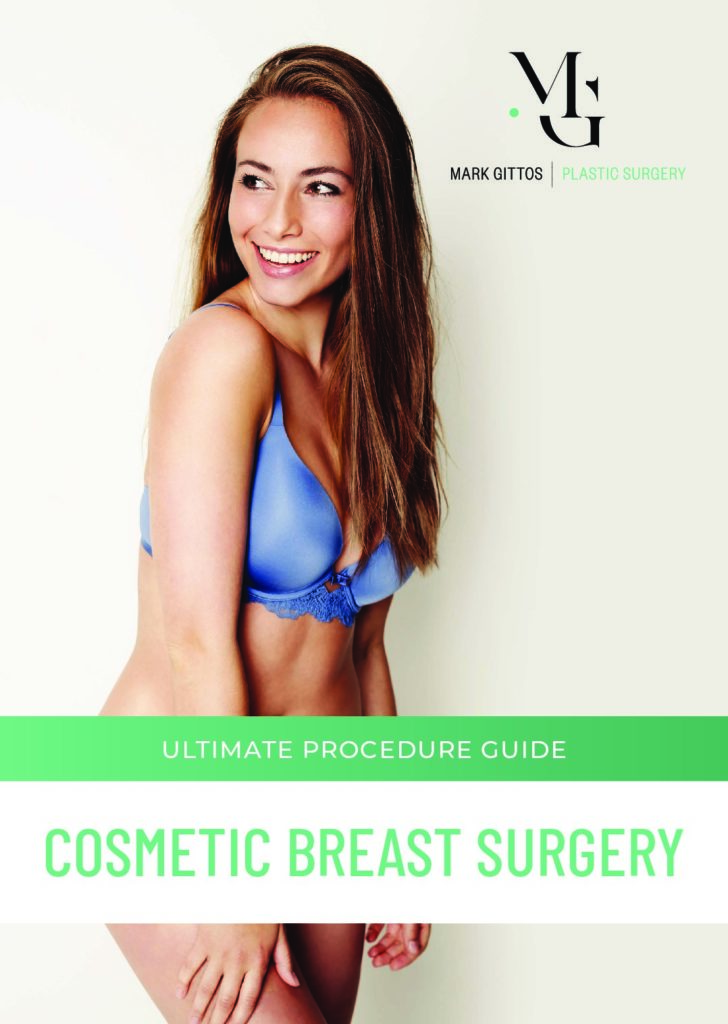
Other names and descriptors for tubular breasts are:
- Tuberal breasts
- Conical breasts
- Cone-shaped breasts
- Constricted breast
- Narrow breast
- Snoopy-looking breasts
- Puffy nipples
- Pointy nipples
How do they form and what happens?
Doctors are still working on understanding how tuberous breasts form. According to some, the problem starts during the development of breast tissue when in the mother’s womb. There’s still inconclusive evidence on whether there’s a genetic link to this condition.
Regardless of the initiating factor, tuberous breasts start to become apparent during puberty, when the breasts are developing into their adult size. During this period, the breasts do not form enough breast tissue, and the connective tissue ring surrounding the nipple forms abnormally, resulting in the “snoopy” or pointy appearance of the breast.
Diagnosis – How do you know if your breasts are tubular?
If you have small breasts, here are some ways you can tell if they are tuberous:
- Your breasts are cylindrical and narrow instead of round or teardrop-shaped.
- Your breasts are droopy or small, especially on their upper poles
- Your areola (the pigmented skin around your nipple) looks large in proportion to your breast
- Your nipples are not in balance with the surrounding small breast
- Your nipples are puffy or pointy
- Your nipples are pointing in an odd direction
If you think your breasts’ appearance fits these descriptions, then you might want to consider getting an expert opinion and exploring your options.
Who can diagnose the condition?
Tuberous breasts are best diagnosed by a plastic surgeon with experience in diagnosing and treating the condition. By performing a thorough physical examination, the plastic surgeon can uncover the problem without the need for any further testing.
Your GP might also be able to identify tuberous breast upon examination, however, referral to a plastic surgeon might be adequate, since the latter can better diagnose the condition and offer you treatment options. If you meet certain strict criteria, the corrective procedure might be eligible for a minor rebate from your health insurer or Medicare. However, in some cases, the surgery is considered cosmetic, and no rebate is granted.
What are your treatment options?
Tuberous breasts are not considered a health threat, however, surgical correction is an option if you have cosmetic concerns. Tuberous Breast Correction is different from the usual breast augmentation surgery and entails a surgical release of the constricted breast tissue to achieve satisfactory cosmetic outcomes. Therefore, proper diagnosis is vital to achieving optimal results.
The surgery is done under general anesthesia, where the surgeon performs a small incision in your breast and inserts a tissue expander or a breast implant. Follow up surgeries might be needed later on to finalize the treatment. Usually, you will be discharged the next day with painkillers, but you might need a few days of home rest.
How to choose a breast surgeon to get treatment advice about Tubular or Pointy Breasts
Whether you’ve been diagnosed by your GP, or just have concerns about having tuberous breasts and are looking to explore your options, visiting a physician that’s most qualified in diagnosing and treating this condition is the rational thing to do. Tuberous breasts can be a challenge to treat because:
- Breast augmentation is more technically demanding in tuberous breasts
- Follow-up procedures and corrections may be needed
- A relatively small area on the chest wall for breast implants, making their use alone without proper surgical correction less than ideal.
Please avoid choosing cheap overseas breast augmentation surgery that’s not specifically designed for tuberous breasts. Plastic surgeons, especially experienced ones, are highly qualified in treating tuberous breasts and offer breast surgery that’s specifically designed for tuberous breasts and provides the best cosmetic results.
For more information on plastic surgery for pointy breasts, puffy nipples, or under-developed breasts, visit this Tuberous Breast Surgery page.
About Mr Mark Gittos FRACS (Plast) – London Plastic Surgeons
Practice locations in London & Essex, UK and Auckland, New Zealand.
Mr Mark Gittos offers high quality, natural-looking cosmetic surgery results and is highly experienced in Breast, Body and Face Surgery having performed over 4000 Surgeries in the last 26 years.
With world-wide expertise Mr Gittos is an expert in breast, face and body surgery for men & women.
Mr Mark Gittos is a leading Specialist Plastic Surgeon and operates a practice in London UK and Auckland New Zealand. His practice focuses on both surgical and non-surgical procedures, each designed to help restore, improve or change a physical characteristic or problem. The first step in every case is to talk through your personal requirements and explore all the options, before deciding on the most effective solution.
Naturally, before any treatment is begun, we will explain clearly the advantages and risk factors; so that you have the information you need to make an informed decision that is best for you. Visit the practice to find out more.

NEXT STEPS
Do your Research
- Read the Website and Blogs relevant to your procedure
- Browse our Frequently Asked Questions including how to choose a Surgeon for your procedure
- Download the Guides to Surgery
What to Bring to your Plastic Surgeon Consultation
- Bring a friend or relative to help discuss the information and your choices
- Take lots of notes and read the documents provided thoroughly
- Want more information before scheduling your consultation?
Book your Initial Surgery Consultation
- A Referral from your GP or specialist is helpful but NOT essential – you can have a consultation without a GP Referral
- Email us or Call in London on 07557 858156 to arrange your surgeon consultation appointment.
- Secure your consultation with Mr Gittos by paying the Consultation Fee in advance
- A consultation with Dr Gittos is £195.
Please contact us to arrange to book a consultation or to speak with our Patient Care Advisor.
Send an enquiry form today or UK phone 07557 858156 during Clinic Hours
